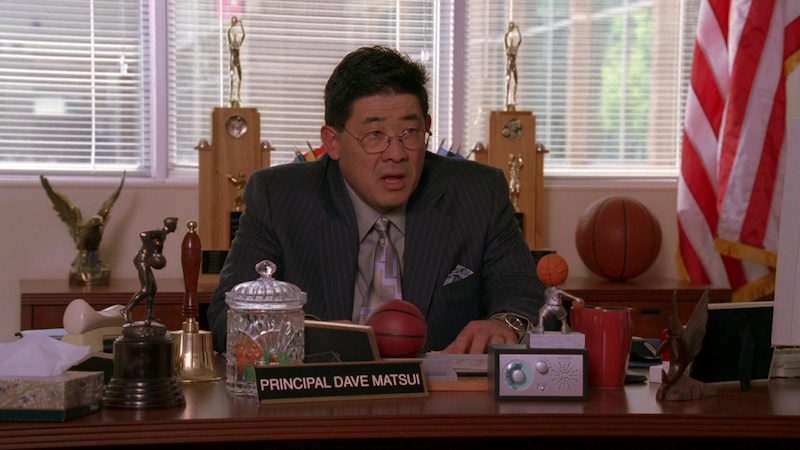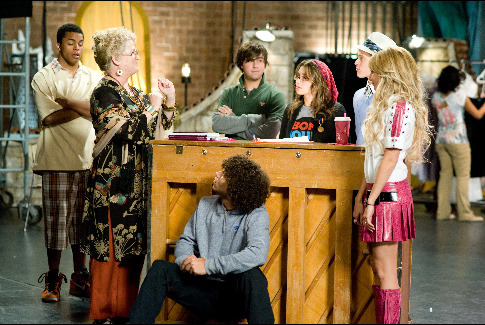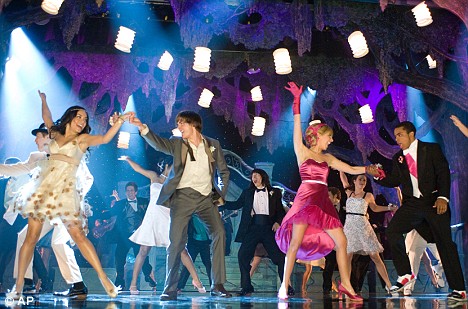Whether you teach drama or not, the day may come when you are tapped to run a school production. For most teachers and students, the idea of running a musical without an experienced guide seems daunting. Where do you start?
In this series, we will help walk you through the basic steps of organizing a show, from pre-production to your final performance. Now, it bears mentioning that every production is different, so this is in no way a 100 percent foolproof, completed guide. But it should help you get started, and as with anything in the arts, you may have to get creative.
Here are five steps to help you organize the early stages of your school production:
1. Meet With the Higher-Ups

Before embarking on your theatrical journey, it’s essential to sit down with those in charge. Schedule a meeting to discuss your ideas for the production, your budget, timelines and any restrictions. Knowing the parameters you’re working within right off the bat will help you avoid problems down the road.
2. Choose a Show

There are a few ways to go about this one. First, decide what type of production you want to have. Will it be a musical? A play? A revue? There are plenty of choices, and it’s best to pick what makes you feel most inspired, as you will be working on this show for weeks. Also, consider the age group of the students. A show like “Rent” is a no-no for your elementary school spring musical. Always clear your choice with your school administrator before moving ahead.
Your next job is to decide whether you will purchase the licensing for an existing show or perform something original. If you decide to select an existing show, know your budget before you start shopping available licenses.
Or, if you have an incredibly talented budding playwright in your school, think about inviting them to have their script performed. You never know — the next Lin-Manuel could be in your midst.
Whichever path you choose, ensure the show has a variety of roles.
3. Build a Team

No one is an island, especially when it comes to a show. You will need a team of reliable creatives with whom you can divide the workload. It’s always nice to have a mix of adults, staff and students. Your gathered creative team should include people who will handle:
- Directing
- Choreography
- Music
- Stage managing
- Set design
- Costumes
- Props
- Lighting
- Sound
- Hair/makeup
Put the word out to the student body and request that interested students attend a meeting. Have those who attend fill out a quick survey about what they are interested and where they feel their talents would best serve the production. A word of advice: Avoid filling your entire creative team and backstage crew with senior students only. It’s equally as important to train younger students to ensure the success of future productions.
It’s good to establish as many members of your team as possible at the start of the production process so you can communicate all the way through. The last-minute scramble is a stress you want to avoid as much as possible.
4. Hold Auditions

With the show chosen, it’s now time to cast. Choose a space, date and time to hold your auditions and ensure the director, choreographer and music director are available to participate.
Posters, announcements and school-approved social media feeds are a few ways to advertise your auditions to the student body. Don’t underestimate the value of classroom visits as well. Stop by different classes and ask the teachers to spend five minutes speaking to the students about the production.
Auditioning students should be asked to prepare a few things:
- A memorized monologue will give you a taste of their acting abilities. You can allow them to choose their own or provide one beforehand. You can also give them a short section of text from the show you are doing to see how they would handle a specific character.
- If you are performing a musical, they will need to sing something for you. Ask them to come prepared to sing an excerpt from a piece of their choosing. If you don’t have an accompanist available, don’t worry — a cappella works, too.
- Ask students who audition to fill out a survey form before they arrive that includes details such as their name, school year, the role they’re auditioning for and any previous performing experience.
On the day of auditions, call each student into the room one at a time to audition. Either have each student provide a school photo or take one yourself. When your team is going through notes afterward, it can be tough to remember every single person if there were a lot of auditions. Be sure to take specific notes so you have something to reference when you make your decisions.
If you are auditioning for a musical, you may also want to have a separate dance audition. The students will learn a short combination from the choreographer before they perform it in groups. Ask the dancers to wear a number during the audition to make it easier to take notes.
5. Cast Your Show

When all the auditions are complete, sit down with your creative team and review everyone’s notes. Consider all the aspects of the audition when casting each student. A few things to remember:
- Don’t be afraid to mix things up. I was once part of a production of “Alice in Wonderland” where the best audition came from a male student. He was cast as the lead, Alice became Alex and the production was a hit.
- Take chances on new talent. It is common in school productions that the same students are always cast in the lead roles (“High School Musical” didn’t make that up). Talent can be lurking in unexpected places, just waiting for the opportunity to shine.
- Much like the creative team, avoid casting all senior students. It is vital to nurture the younger students and help them develop their talents and skills.
Once casting is complete, post the list and prepare for excitement and disappointment. It takes a lot of courage for students to put themselves out there by auditioning, and a student may not take creative chances in the future if they’re discouraged by a negative experience. Be sensitive to the students you don’t cast and encourage them by offering them a position backstage or in another part of the production.
The initial stages are now complete, and the rehearsal phase can soon begin. Stay tuned for Part 2, where we will discuss finding a rehearsal space, creating a schedule, keeping the production organized and facilitating rehearsals.







2 Comments
Leave a Reply2 Pings & Trackbacks
Pingback:How To Organize A School Production Part 2: Rehearsals - Theatre Nerds
Pingback:How To Organize A School Production Part 3: Production - Theatre Nerds